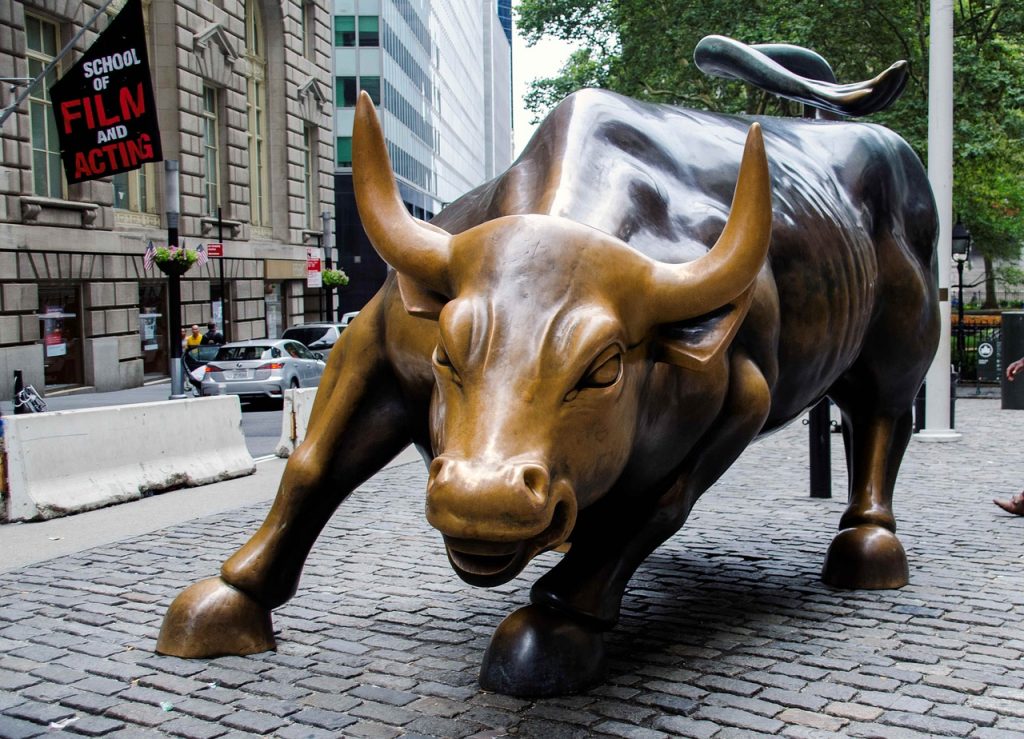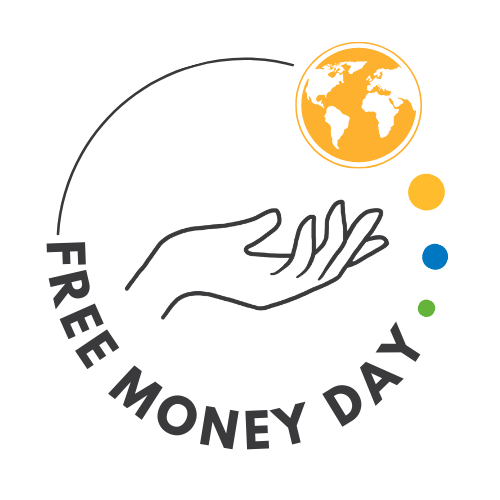More About Money

To understand the challenges inherent in our current money systems, it’s helpful to know a little about the history and workings of present day finance. A historical look at money helps to show that our economic systems are constantly changing, and can also encourage us to be more intentional about how they change as we move forward.
The evolution of money
The money systems of today may seem like ‘the norm’, but if we look at money through time we will see that our current systems have not been the norm for most of history, and it’s likely that they will not be the norm in the future. Just as human beings and their societies have evolved, so have the means of trade and exchange.
Bartering & gift economies
Contrary to popular belief, economic activity in ‘pre-money’ times was not primarily based on bartering but based on ‘gift’ giving. In a gift economy, goods and services are exchanged without an agreement for rewards, either immediately or in the future. Widespread participation in the gift economy serves to circulate and redistribute valuable goods within a community.
Where barter did occur, a variety of objects were used as ‘currency’. In ancient China (1200 BC), cowrie shells were used to barter for goods. Many centuries later (500 BC), Greek, Persian, Macedonian and Roman empires were using coins made of precious metals, including bronze, silver and gold. Paper money emerged in China over a thousand years after these coins (800 AD), only to be phased out many centuries later (1455 AD). In the late 16th century, paper bank notes were being used in the original 13 colonies of the United States, and in the late 17th century, English banks began to issue receipts for deposits that were circulated. In 1862, the US Treasury issued paper money for the first time to help finance the Civil War. More recently, rum was used as a currency in 18th century colonial Australia.
‘Gift economics’ is still very much a part of every day economic activity all around the world – ‘gift economy’ activity includes things like: volunteer work; caring for family or friends; sharing a bicycle, books or garden tools; participating in the development of open source software; or donating/giving away money or goods.
The gift economy is the oldest, most enduring system of exchange.
Money as we know it
Money systems underwent some major shifts over the last few centuries, and these changes have directly shaped the money systems we use today. Firstly, it may seem quite natural to pay interest on a loan today, but at one time interest – or usury, as it was then known – was forbidden by the Christian churches. However, during the Middle Ages lenders began to charge interest on money loaned and this approach led to certain groups being able to accumulate wealth and power. The Knights Templar (a Western Christian military order), for example, exploited loopholes and charged fees on money they loaned, increasing their wealth and power and helping to fund their military campaigns.
Secondly, the stores of value (for example, gold) became separated from the notes or tokens that represented the value. Hundreds of years ago, the first bankers were people who securely stored ‘hard’ currency (like gold, which was both heavy and dangerous to carry around) and issued depositors with a note that served as a promise to pay.
Through history, governments have often switched to forms of fiat money in times of need (such as war), simply by printing the money needed. However, if they produced money more rapidly than economic growth, the value of money is reduced through inflation.
Over time, rather than returning to banks to collect and use the gold (or other precious currency) for purchases, people simply began swapping the bank notes. All that gold was just left sitting there – and it became fairly rare for someone to make a claim on it. The bankers then realized that since claims weren’t often made, they could lend out two notes for every one piece of gold in their coffers. The amount of money in circulation doubled at the stroke of a pen. Gradually, the number of notes relative to the gold in storage increased, until the system became what is known as fractional reserve banking. This system works as long as people have confidence in it. If a lot of people decide to claim the wealth at once, the system crashes – as it did in 1929 when the stock market collapse triggered The Great Depression. Although it differs from country to country, under this system most banks are only required to hold a small percentage (typically less than 10%) of the actual amount they are legally able to loan out.
In 1971, the United States switched to fiat money when President Nixon de-linked the US dollar from the gold standard, indefinitely. With many countries’ currencies fixed to the US dollar at the time, this single decision meant that most of the world’s currencies effectively became fiat-money based.
Thirdly, money systems have become based on debt. In the 20th century, we came to understand ‘debt’ as ‘consumer credit’ – in the 1920s, some US companies began issuing credit cards, including oil companies and department stores, yet it was only in 1946 that the first bank-issued credit card was introduced. Debt, for so long a restriction on consumption, became an enabler of consumption. Debt itself became a commodity. Over the last few decades, debt of many kinds, including government, consumer, and corporate, has grown to unprecedented levels.
But debt is also how modern money is brought into existence. This critical point deserves a more detailed investigation. Let’s take a look.
Indebted
In addition to banks needing only a fraction of the reserve amount in order to lend and the increasing separation of money from trade of real goods and services, the way financial systems are structured has become the key driver of the need to keep economies ‘growing’ (more people consuming more, faster).
Money is created by being loaned into existence as debt. This debt is comprised of the money borrowed, but also of the fees that the lender charges the borrower. As repayment of the loan with interest requires extra income, whole financial systems are based on the premise that the economy will continue to grow so that all debts can be paid back with interest. As a result, perpetual growth is a requirement for many current economic systems.
Money and exchange in a digital world
Once the value of money was divorced from the ‘cold hard cash’ it represented, the ability to wire or transfer money from one party to another became possible. This has been, and continues to be, very significant for entire populations who live and earn money far from home (due to displacement or relocation for a variety of political and economic reasons).
As money has become increasingly ‘virtual’ in this way throughout history, the leap to online banking was not a great stretch of the imagination. Since the late 20th century, innovation in money and exchange systems has exploded with the rise of the Internet and electronic banking. In 1994, a US bank became the first to offer Internet banking. 1997 saw the launch of both BPAY, an electronic bill payment system, and Octopus, the world’s first contactless smart card (for use on Hong Kong’s public transport system). At the turn of the millennium, Paypal was launched, which gave people the ability to pay anyone anywhere in the world electronically, so long as the payer and the payee each had a bank account, a Paypal account, and an email address. A range of possibilities continue to emerge through new online transaction methods and currencies such as Google Wallet App, Facebook Credits and Bitcoin.
While such innovation has delivered convenience and other positive benefits, the fact remains that money no longer has a connection to a store of real, physical wealth. When money was unleashed from the restrictions of the physical world in the 1970s, compounded by the emergence of digital economies, speculative transactions such as derivatives trading grew dramatically. The trade of actual goods and services has become a smaller and smaller part of the global financial casino as the practice of ‘making money from money’, and consequently the amount of currency available, has grown exponentially.
Speculative economic systems have been used to create and legitimize huge inequalities, with a massive shift of resources from the so called ‘developing’ world to the ‘developed’ world; and a wealth transfer from lower to higher earners within many nations. Despairingly, the increasing gap between rich and poor is also drawn along racial and gender lines. Not only has our money been divorced from the wealth it represents, but what we purchase with it has been strategically disconnected from the labor required to produce it, as well as the environmental costs. We now have money systems that require ever-expanding debt, which makes them fundamentally unstable – and economic instability hits the most vulnerable hardest.
In addition to fuelling inequality on an unprecedented scale, our debt-based money systems are now putting all of humanity at risk – pitting us against physics and biology by creating a runaway train of debt, a Ponzi scheme that we need to keep feeding with more and more growth, because entire systems have been structured to demand it. But what happens when our economic systems that must, by their very design, keep expanding, run into the physical and biological limits of the earth? What can we do? What are our alternatives?
Help show that a more generous world is possible by participating in Free Money Day.
